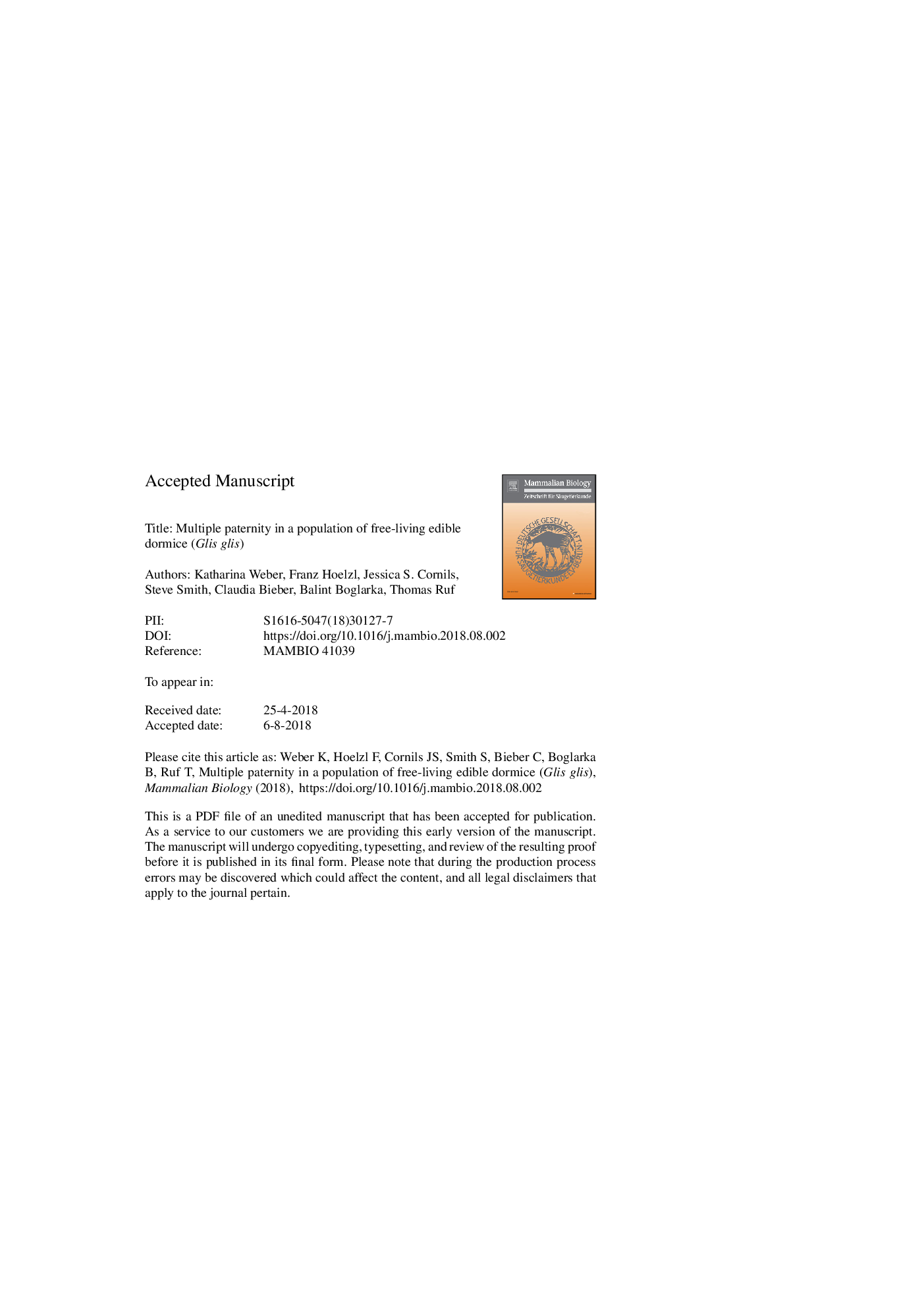| Article ID | Journal | Published Year | Pages | File Type |
|---|---|---|---|---|
| 8475492 | Mammalian Biology - Zeitschrift für Säugetierkunde | 2018 | 17 Pages |
Abstract
The mating system represents one key element of a species' life history. Although some life history traits of the edible dormouse (Glis glis) have been investigated thoroughly, little information is available about the mating system of this arboreal, nocturnal, hibernating rodent. Molecular studies have suggested that polygynandry and high prevalence of multiple sired litters are typical among small rodent species. Previous behavioral studies have proposed a promiscuous mating system for the edible dormouse, but clear evidence is still missing. In this study, the genetic mating system of G. glis was evaluated by genotyping free-living dam-offspring groups. Based on the assumption that males establish territories at least during the mating season, male individuals in the vicinity of the selected females were included in the investigation. Parentage assignment was conducted by applying the COLONY and GERUD software, using 19 polymorphic microsatellite loci. Multiple mating within this population of edible dormice was detected by both programs, since all investigated litters were sired by at least two males. Therefore, the results provide the first evidence of polygynandrous mating and multiple paternity occurring in a wild population of edible dormice. However, paternity analysis of the chosen males revealed a low assignment rate of offspring to the candidate sires. These findings support previous hypotheses of non-territoriality in males.
Related Topics
Life Sciences
Agricultural and Biological Sciences
Animal Science and Zoology
Authors
Katharina Weber, Franz Hoelzl, Jessica S. Cornils, Steve Smith, Claudia Bieber, Boglarka Balint, Thomas Ruf,
